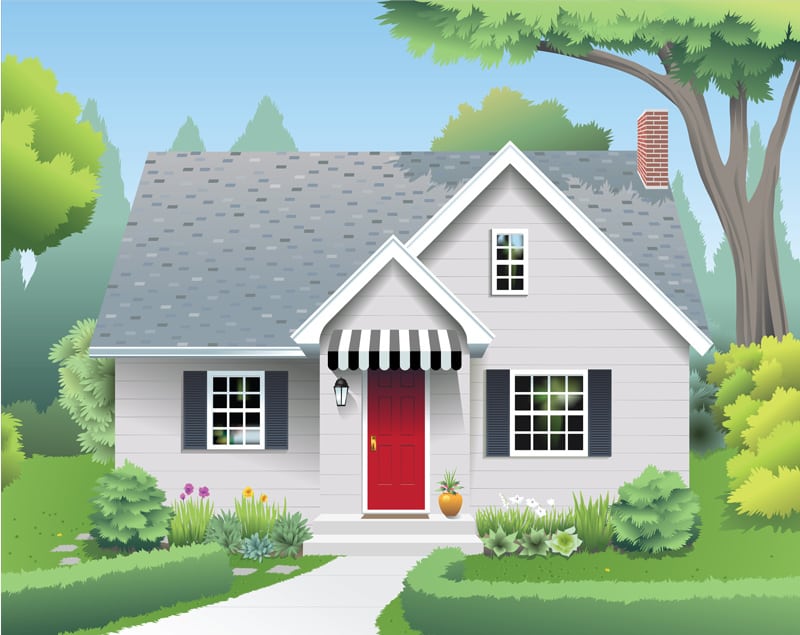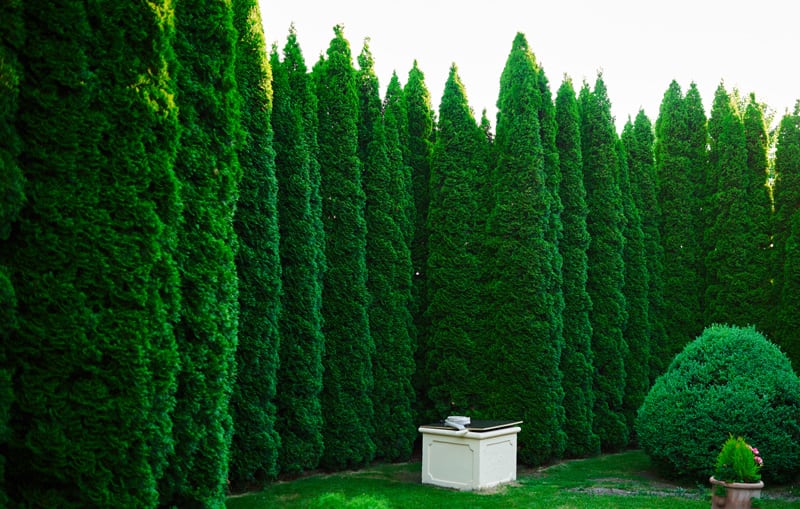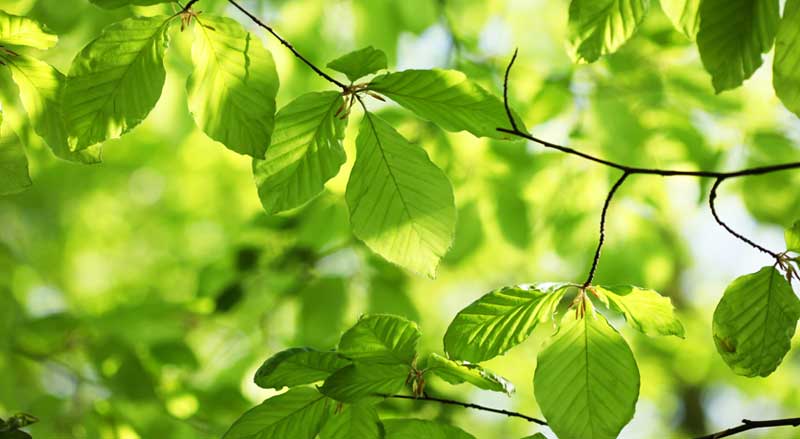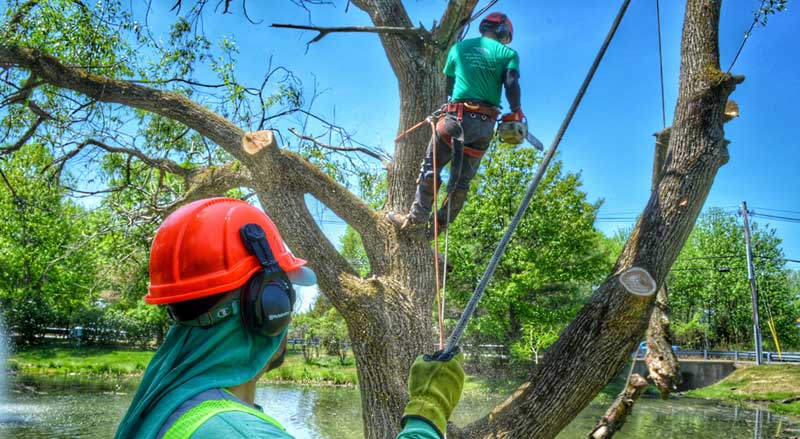Trees provide long-lasting beauty and increase your property values, but that’s not all they have to contribute. Properly chosen and sited trees can reduce your heating costs in winter and your cooling costs in summer by maintaining a good thermal balance for your home.
A study by the USDA Forest Service found that shade trees can reduce your summer electric bill by about $25 a year. Here are some of the best options of trees that provide a thermal balance for your home.
Shade Trees
Pin Oak
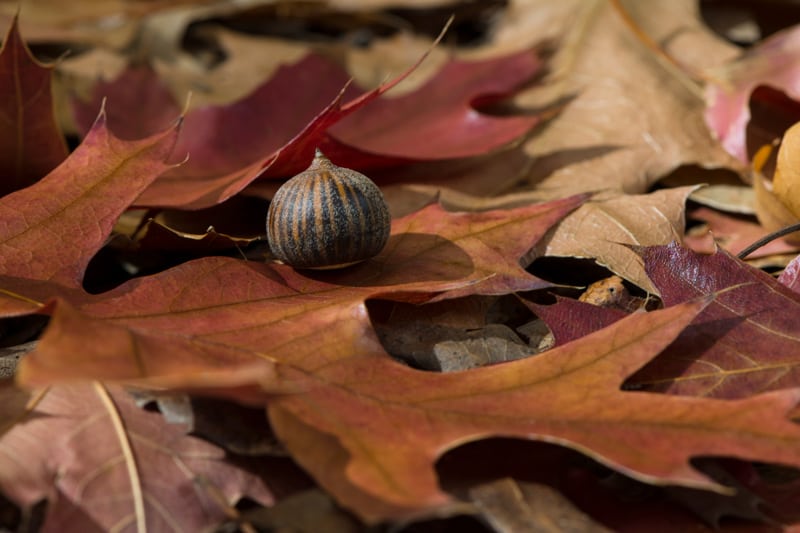
Also known as the Nuttall Oak, they’re the fastest growing oak variety and provide ample shade when planted on the west or south side of your home. As a bonus, these trees will produce acorns that will attract squirrels, deer, and some species of birds.
Red Maple
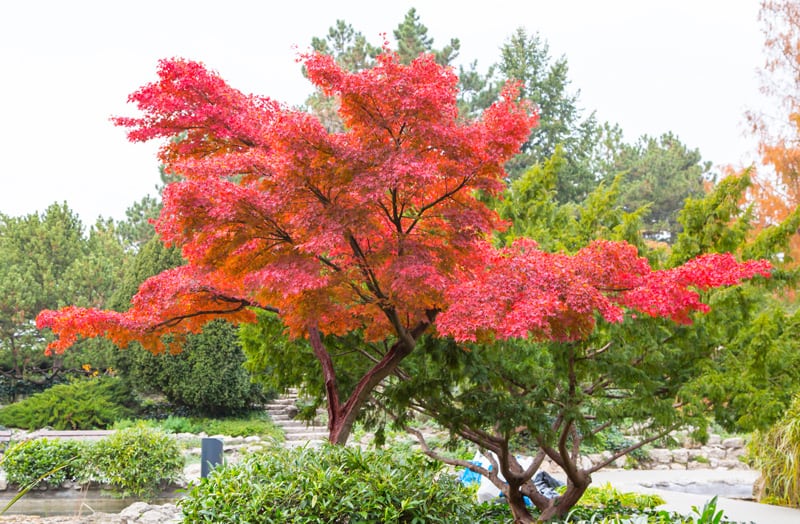
The Red Maple tree is another fast grower, accomplishing as much as 3 to 5 feet of growth per year. A superb shade tree, the Red Maple will also add beauty to your home with its brilliant red fall foliage.
Sargent Cherry
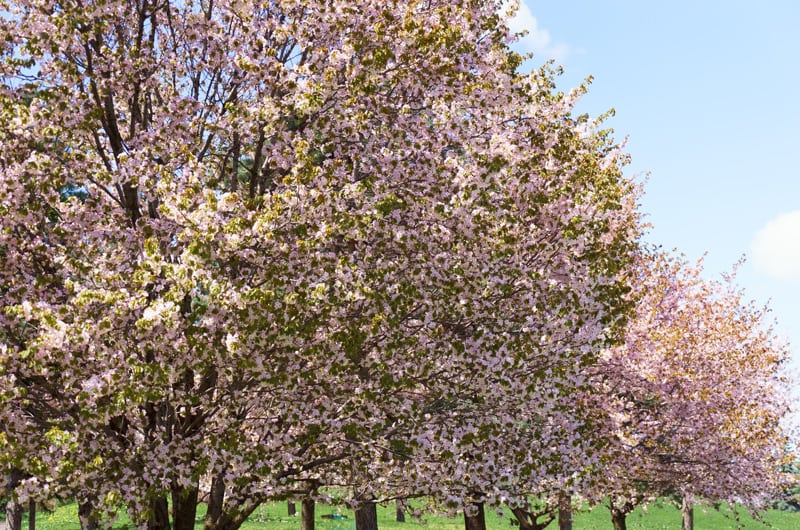
This beautiful shade tree grows 20-30 feet high and wide. It likes full sun and moist soil. Its clouds of pink flowers open in early spring before leaves appear. In fall, this tree has an orange to red color making it a great ornamental shade tree for your landscape. Its fruit will attract birds while its wide circumference and full leafy foliage will provide shade for your home.
Evergreen Windbreaks
Eastern Red Cedar
this fast-growing evergreen makes a superb winter windbreak, growing up to 50 feet tall and 20 feet wide. It grows well in a wide variety of soils and is even salt tolerant – so it can be planted by roads and driveways. The berries will attract birds in late summer and fall.
Green Giant Arborvitae
an evergreen with a uniform pyramidal shape that grows 3 or more feet a year. At maturity, this specimen will reach a height of 50-60 feet with a width of 12-20 feet. This evergreen is extremely adaptable and prefers full sun. This is one of the most common types of trees used to create a windbreak in NJ yards.
Chinese Juniper
a durable evergreen tree or shrub that will bring year-round color to your yard. The Chinese juniper is conical in shape and grows to a height of 60 feet. It’s foliage of scale-like needles are prickly and tend to deter deer from landscapes. This tree can grow in dry or moist areas and is tolerant of acidic or alkaline soil. The Chinese juniper is a slower growing tree in comparison to other evergreens on this list but it is still a great option to create a windbreak.
For maximum impact, plant deciduous shade trees on the western and southern sides of your house and place evergreens to the north and northwest to protect your home from winter wind.
The deciduous trees will shade and cool your home during the summer months. Because they lose their leaves in fall, they won’t block out that precious winter sunlight. Meanwhile, the evergreens hang onto their leaves during the winter, allowing them to protect your home from winter winds and keep it warmer.
For more information about trees that will positively affect the thermal balance of your home, contact us at Tress Unlimited where we have been leaders in the tree service industry in Northern New Jersey since 2005.

